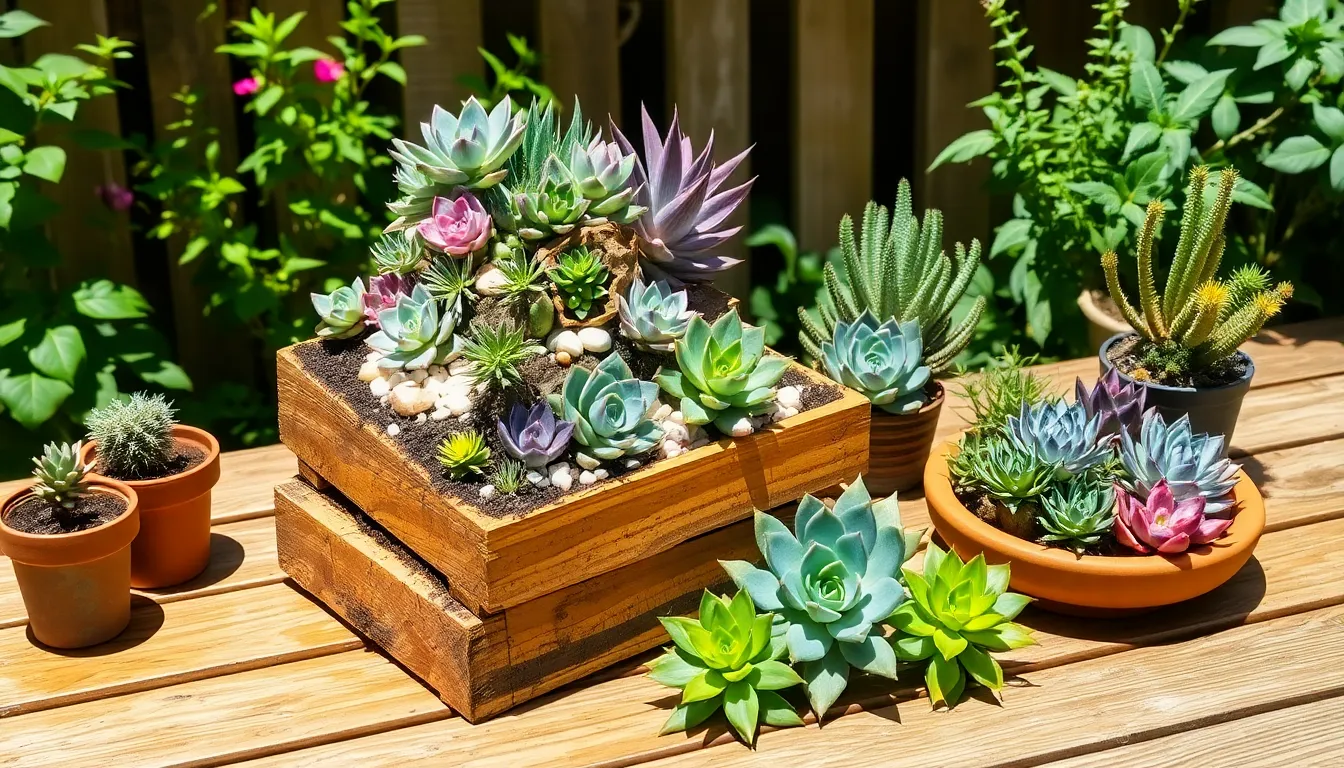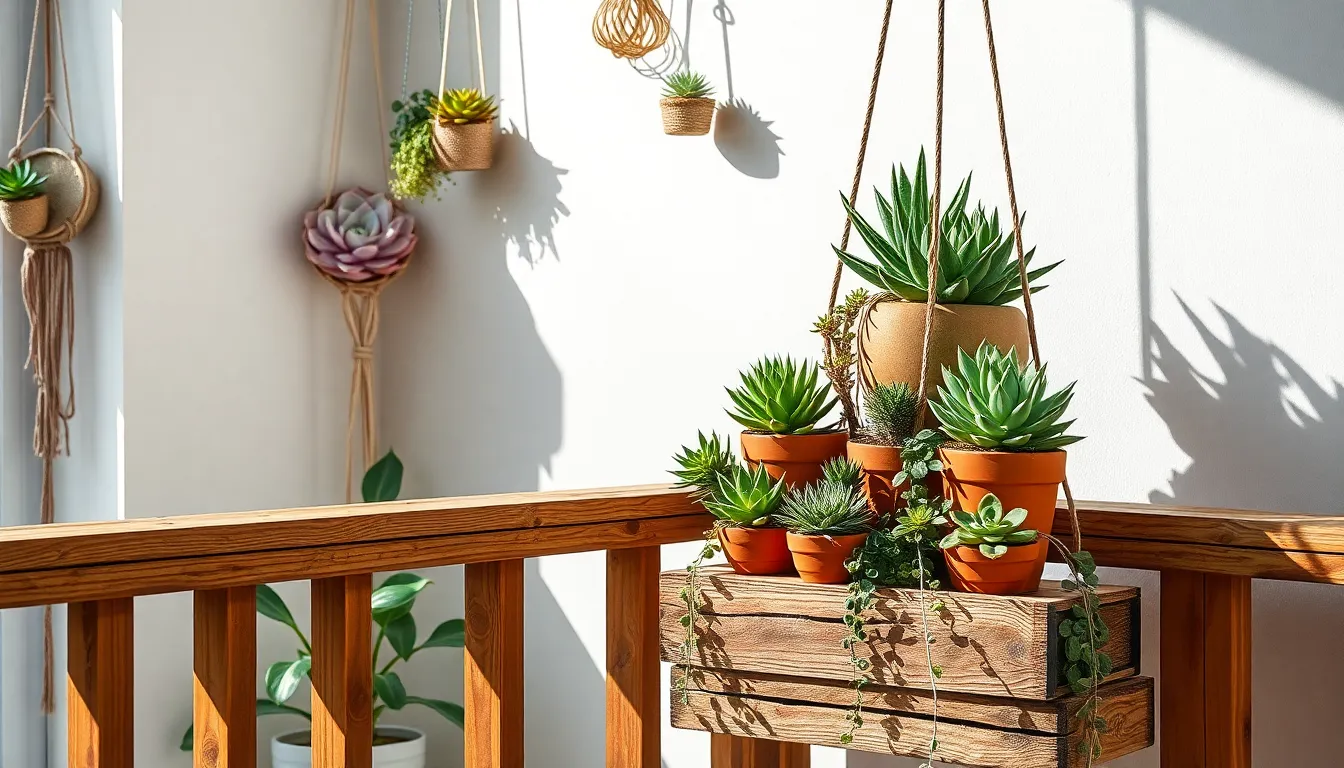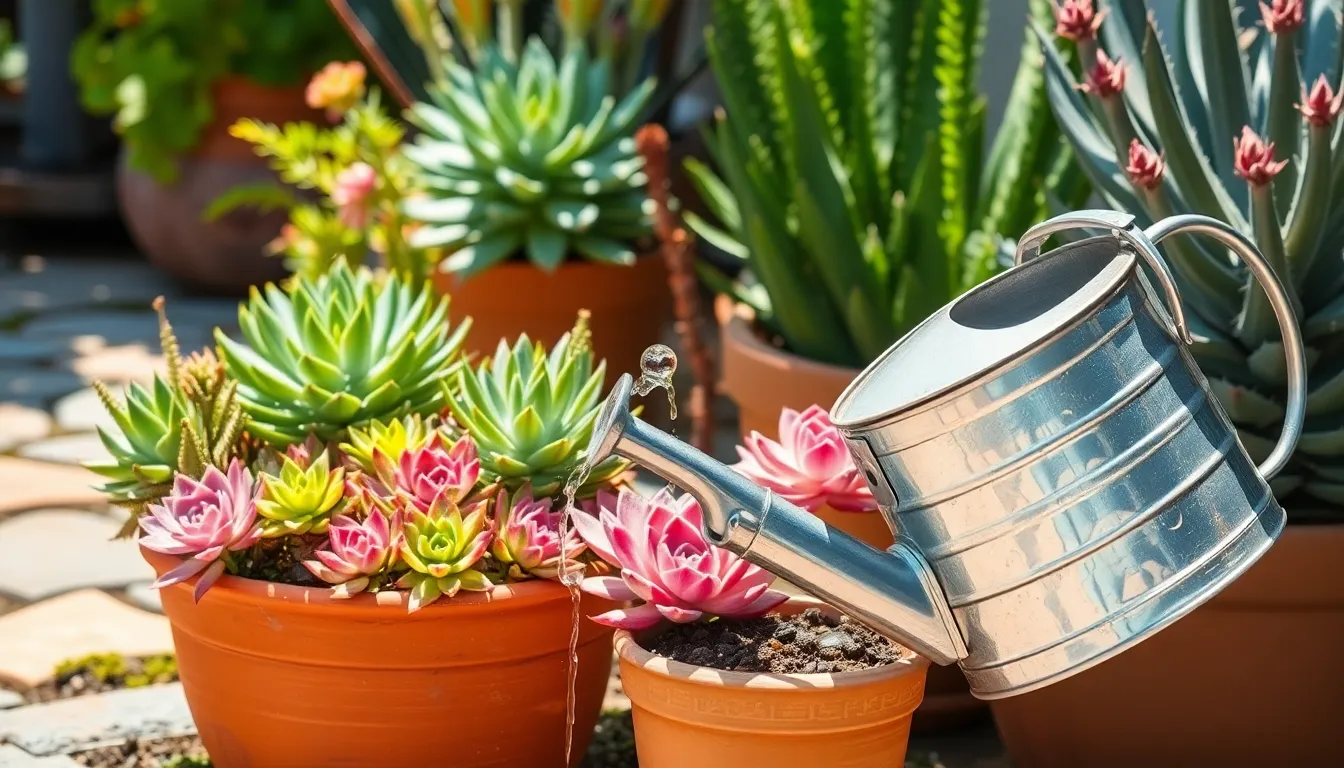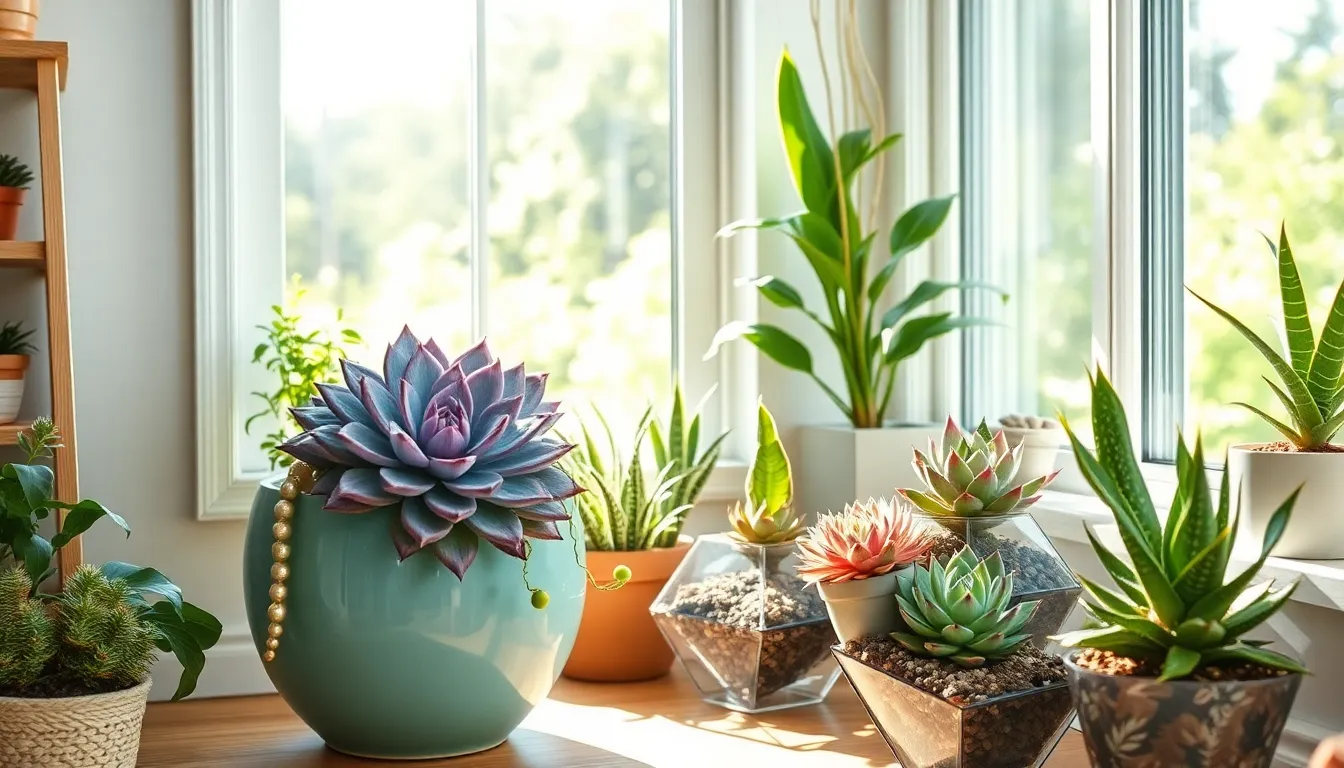Welcome to the delightful world of succulents, where endless creativity meets the simplicity of nature’s own art. Whether you’re a gardening novice or a seasoned green thumb, succulent arrangements offer a unique opportunity to express your creativity while crafting verdant masterpieces. With their diverse shapes, vibrant colors, and low-maintenance nature, succulents are the perfect plants to experiment with, making them an ideal choice for beginners and experienced gardeners alike.
The charm of succulent arrangements lies in their versatility, transforming any space into a living canvas. As you learn the art of combining these resilient beauties, you’ll discover how easy it is to design eye-catching displays that reflect your personal style. From quirky containers to imaginative layouts, you’ll gain insights into creating arrangements that not only thrive but also elevate the aesthetic of your home or garden.
In this article, we’ll guide you through the essentials of crafting stunning succulent arrangements, ensuring your gardening journey is as rewarding as it is fun. You’ll explore various design techniques, discover the best succulents for different settings, and learn how to care for your creations with confidence. Whether you’re looking to refresh a windowsill or transform a patio, this guide will equip you with the knowledge and inspiration to make your succulent dreams come alive.
Choosing Beginner-Friendly Succulents
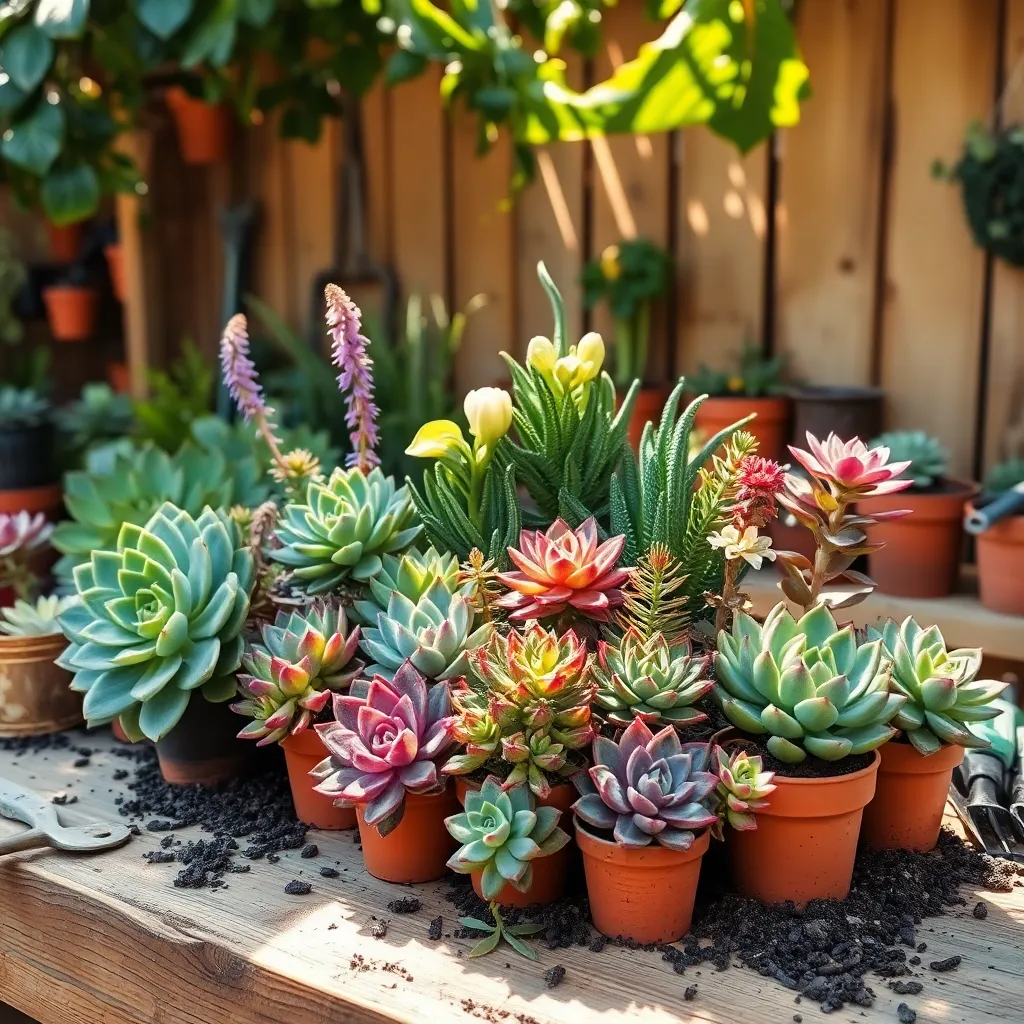
When selecting beginner-friendly succulents, consider starting with varieties like Jade Plant (Crassula ovata) and Haworthia, which are known for their resilience. These plants thrive in well-draining soil, such as a cactus mix, and require infrequent watering, making them ideal for those new to gardening.
It’s crucial to provide succulents with ample sunlight, as most varieties need about six hours of bright, indirect light daily. If natural light is scarce, using a grow light can be an effective alternative to ensure they receive the energy they need to thrive.
Watering succulents requires a careful balance—too much water can lead to root rot. A practical approach is the ‘soak and dry’ method, where you water thoroughly and allow the soil to dry out completely between watering sessions.
For those looking to experiment further, try incorporating Sempervivum (Hens and Chicks) into your arrangements. These hardy plants can survive cooler temperatures and, with their vibrant rosettes, add a visually appealing texture to any succulent display.
Understanding Basic Design Principles
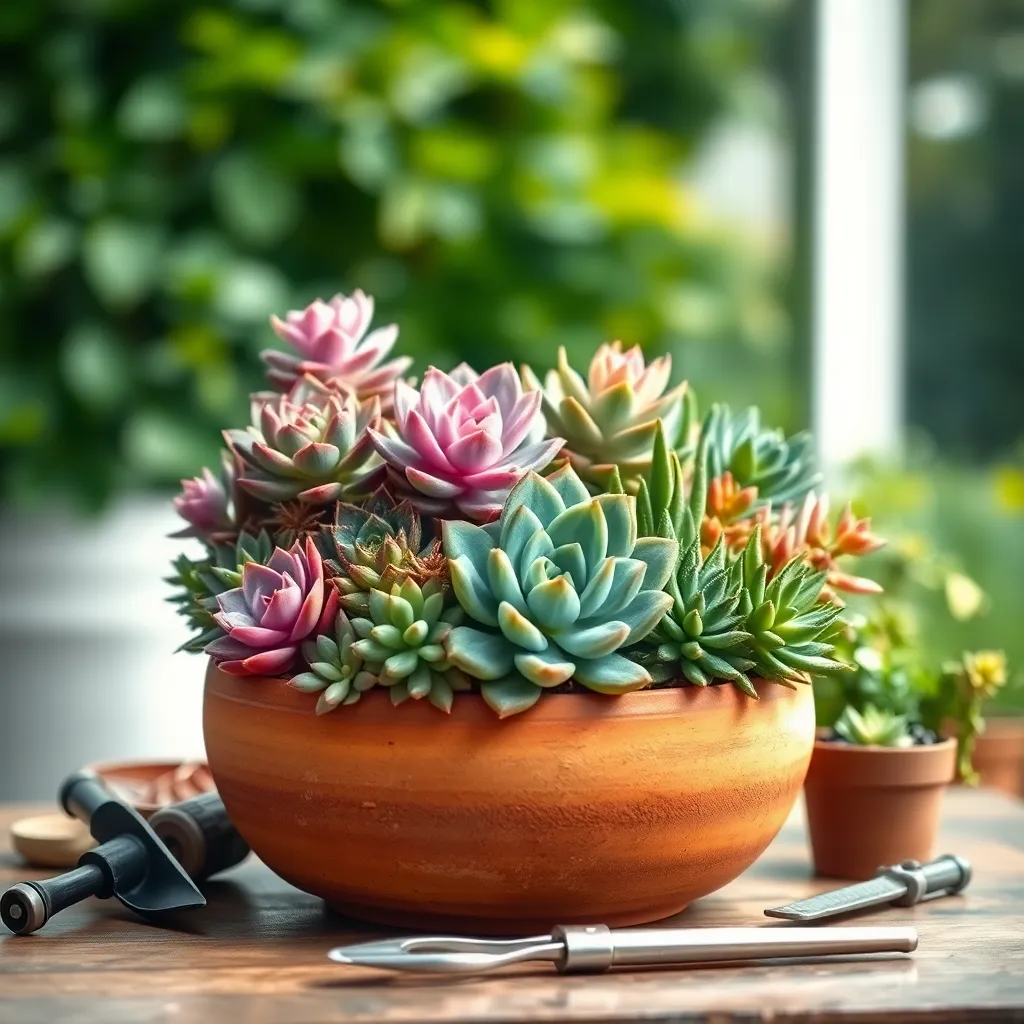
When designing a succulent arrangement, it’s essential to start with a clear vision of the space you want to create. Consider the size, color, and texture of the succulents to ensure a harmonious blend that is both visually appealing and sustainable.
Balance is a fundamental principle of design that can be achieved by arranging succulents of varying heights and colors. Use taller succulents like Aloe or Echeveria to add height, and balance them with lower-growing varieties like Sedum or Haworthia.
To add depth and interest to your arrangement, consider using the “thriller, filler, spiller” method. Begin with a standout “thriller” plant like a large Agave, add “fillers” such as Crassula to provide bulk, and finish with a “spiller” like String of Pearls to cascade over the edge of the container.
Texture is another vital design element that can bring your succulent arrangement to life. Pair smooth-leaved succulents with those that have a more rugged appearance, like Cacti, to create a striking contrast.
Creating Eye-Catching Color Combinations
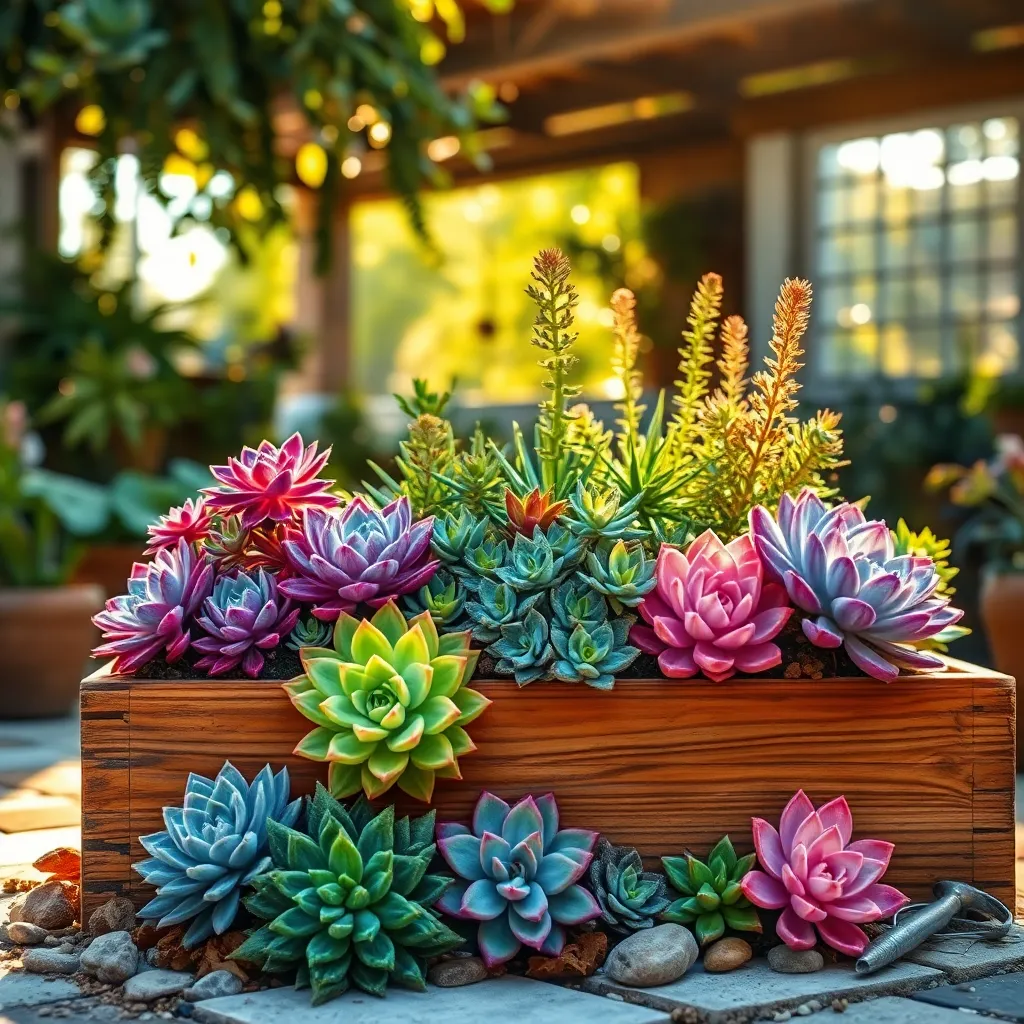
Experimenting with color combinations in your succulent arrangements can transform them from simple to stunning. Begin by selecting a variety of succulents with contrasting hues, such as pairing the deep green of an Echeveria with the vibrant red of a Crassula.
To create a cohesive look, consider using a color wheel to guide your choices. Succulents with complementary colors, such as purple and yellow, can create a visually striking arrangement that draws the eye.
Beyond color, texture plays a crucial role in creating appealing designs. Mix smooth-leafed succulents like Aloe with spiky varieties such as Agave to add dimension and interest.
For a more advanced approach, incorporate succulents with variegated leaves or unique patterns. These can serve as focal points within your arrangement, providing both color and texture in one plant.
Arranging Succulents in Unique Containers
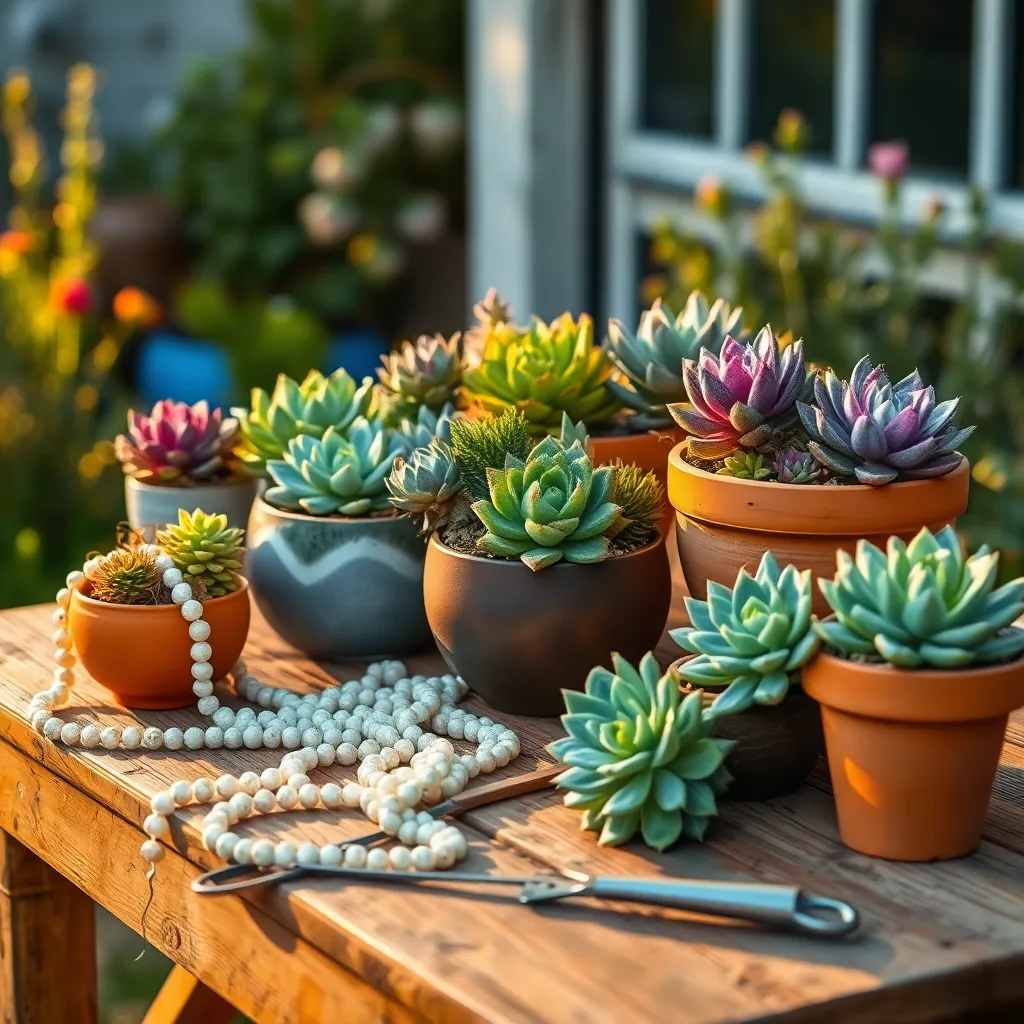
Using unique containers for succulents can add a personal touch to your gardening space. Consider repurposing items like teacups, old boots, or vintage tins to create an eye-catching display.
When selecting containers, ensure they have adequate drainage, as succulents are prone to root rot in waterlogged soil. If your chosen container lacks drainage holes, consider drilling a few or adding a layer of pebbles at the bottom to facilitate water runoff.
Succulents thrive in well-draining soil, so opt for a cactus or succulent potting mix to ensure optimal growth. Mixing in perlite or pumice can further improve drainage and aeration, especially if you are using a larger container.
Watering succulents in unique containers requires a slightly different approach, as these containers may dry out faster or slower than traditional pots. A general rule is to water when the soil is completely dry, which can range from once a week to once every two weeks, depending on your climate and the container type.
Maintaining Your Succulent Creations
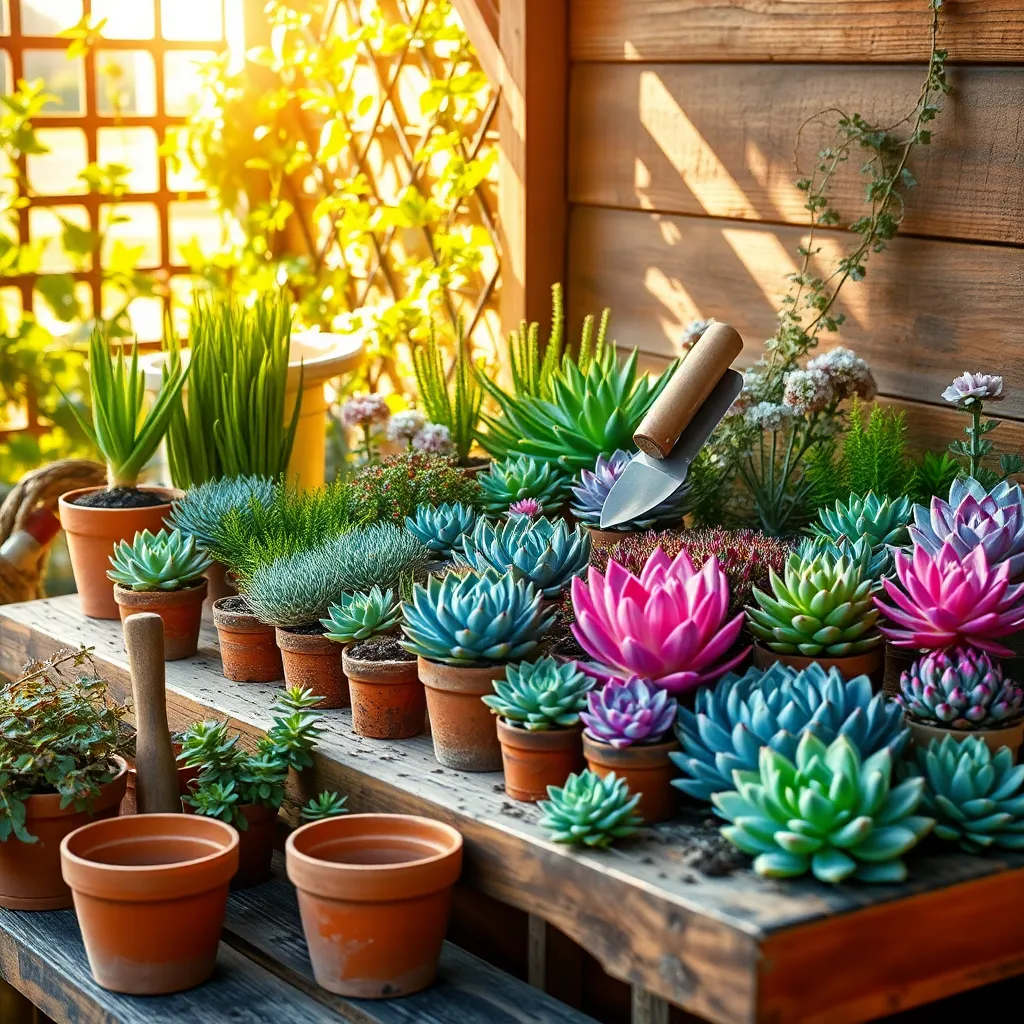
After arranging your succulents in unique containers, it’s essential to maintain their health with proper care. Start by ensuring your succulents receive adequate sunlight, ideally 6-8 hours a day, which is crucial for their growth and vibrant colors.
Watering is one of the most critical aspects of succulent care; these plants prefer a “soak and dry” method. Allow the soil to dry out completely between waterings, and when you water, make sure to do so deeply until excess water drains out from the bottom of the container.
Choosing the right soil is equally important for maintaining your succulent arrangements. Opt for a well-draining soil mix, such as a cactus or succulent blend, which helps prevent root rot by allowing water to pass through easily.
For more advanced care, consider the humidity and temperature of your environment. Succulents thrive in dry and warm conditions, so if you live in a humid area, make sure to provide good ventilation to help the soil dry out faster.
Conclusion: Growing Success with These Plants
As we explored the art of creative succulent arrangements, we uncovered five key relationship concepts that can also nurture our personal connections. First, we learned the importance of balance, ensuring each element in our lives harmonizes like a well-arranged planter. Next, we emphasized communication, akin to understanding each plant’s unique needs. We also delved into adaptability, reminding us to embrace change just as succulents thrive in diverse conditions. Patience emerged as a critical trait, reflecting how nurturing relationships and plants alike require time to blossom. Lastly, creativity encouraged us to infuse joy and innovation into our interactions.
Now, take a moment to apply these concepts by starting a small succulent project with a loved one. This shared activity can spark meaningful conversations and strengthen your bond. As you cultivate your garden, remember to bookmark this article for future inspiration and guidance.
Looking ahead, envision a thriving garden of relationships, where each connection flourishes with care and intention. By nurturing these foundational principles, you’re paving the way for enduring relationship success. Let this be your guide as you cultivate connections that are as resilient and beautiful as the succulents you create together. Save this article to revisit whenever you need a reminder of the growth potential in your relationships.

